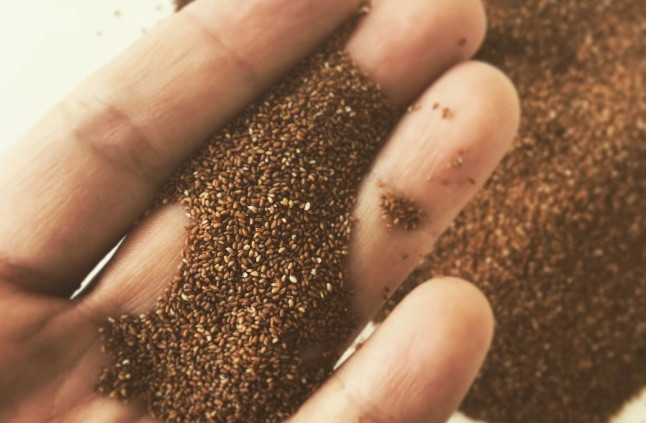The cultivation of teff
Writing an article on the cultivation of Teff brings to mind the first articles written on Quinoa, almost 10 years ago, when Quinoa, like Teff today, was a practically unknown crop in Europe. A few years later, we can happily say that the progress of European quinoa, both in terms of quality and quantity, has certainly been remarkable. This premise about the evolution of Quinoa as a cultural alternative is simply a wish for Teff to follow the same path. We believe that the potential of Teff, at an agronomic level, can be even higher than that of Quinoa both for its rusticity and for its versatility, which allows both spring and summer sowing.
Since it is a very small seed, the seedbed must be optimally prepared. To prevent the seed from falling too deeply, it is advisable to roll before sowing. In any case, soil that is not perfectly prepared can be partially remedied by increasing the sowing density.
Sowing can be done in rows (like wheat) or broadcast. The plant competes very well with weeds by covering the soil evenly.
The quantity of seed required is, approximately, 10-15 kg/ha, on non-optimal seed beds it is advisable to increase the density. The seed must remain on the surface (maximum depth 1-1.5 cm), for this reason it is advisable to use a greater quantity of seed on coarser soils.
Since Teff is a cereal, the same fertilisers and the same quantities used for other cereals can be used for basic fertilisation.
The vegetative phase
In the vegetative phase, Teff does not require particular interventions; its rusticity means that it is tolerant to the typical plant diseases of cereals, harrowing can be carried out in the tillering stage, and a cover fertilisation with nitrogen (maximum 50/60 kg/ha to avoid lodging). If grown as a second crop, irrigation is required to keep moisture in the soil.
Harvest
Teff, like all straw cereals, is harvested with a combine harvester, however different techniques can be used.
The classic method used for cereals is the fastest and most convenient alternative, i.e. using a combine harvester for cereals (with suitable sieves, such as those for alfalfa or clover) and trying not to collect the product when it is too dry to avoid excess of seed losses.
In particularly humid seasons, on plots where weeds are present (Teff normally does not have weed problems) or in the case of lodging, an excellent option is mowing the plant, which is not completely dry, followed by threshing once it has dried.






